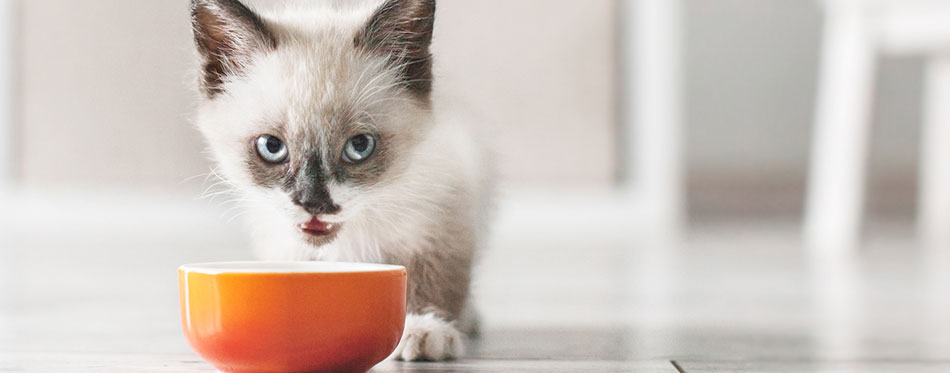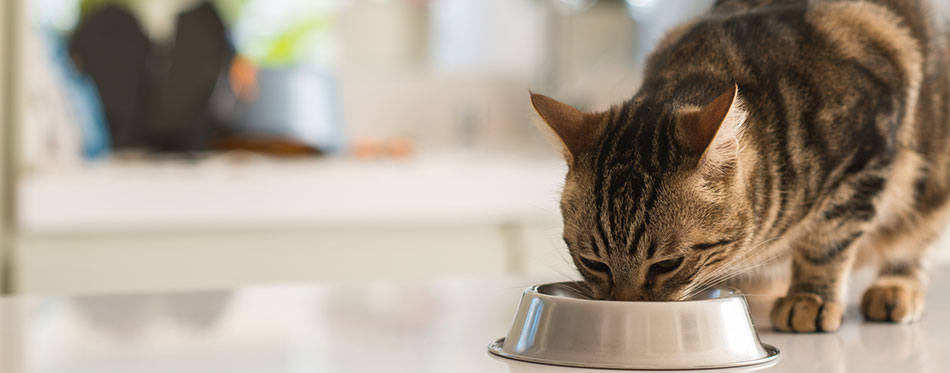We all know that cats can be very fussy about what they eat but sometimes it is a sign that something more serious is going on. As their owner, you are best placed to observe your cat’s eating habits and to spot when something has changed.
The medical term for not eating enough food is ‘anorexia’ and it can be a problem in all animals including humans. However, in cats, it is especially dangerous. When a cat does not eat, their body has to use fat reserves to keep them alive. The fat has to be processed by the liver before it can be used to make energy and this requires a supply of protein. The problem is that by not eating, they do not have enough protein available to process the fat and the liver becomes overwhelmed. A condition called hepatic lipidosis develops which can lead to liver failure and can be fatal.
If you spot any of the symptoms of anorexia in your cat, you must get them to a vet right away. The common symptoms are a failure to eat, sudden weight loss, jaundice, shortness of breath and distension of their abdomen (tummy). It is very dangerous for a cat to go without food for longer than three days so you need to keep an eye on them. Take a look at our review of cat food for weight loss for more info.

Causes of Anorexia in Cats
There are a number of possible causes of a cat not eating. Some cause anorexia to come on gradually and others cause a sudden loss in weight. Here are some of the most common reasons.
- Psychological issues
These tend to be present from when your cat is a kitten or come on in response to a stressful situation. Your vet needs to check your cat over and may decide that they are suffering from anxiety or depression for which they can prescribe treatment.
- Travel and anxiety
A cat not eating and throwing up could be suffering from stress caused by travel or a change in their routine. Cats are creatures of habit and do not react well to change. The loss of appetite could be triggered by a house move or by a new pet in the family. Motion sickness is also common in cats on car journeys. If your cat’s anorexia has coincided with a big change in their lives, you can help them to adapt. You can get herbal remedies and travel sickness medication that could help and an appropriate cat carrier is also useful. Within a couple of days, things should be back to normal. However, if the refusal to eat persists you must see your vet.
- Change in diet
A cat not eating and hiding away may be trying to tell you that they don’t like their new food. On the whole, cats are fairly resistant to changes in diet and often refuse the new food at first. If it is necessary for you to change their diet (perhaps for health reasons) your vet can advise you on how best to do this. If often helps if you make the change very gradually. If they don’t have to eat the new food, just go back to their previous diet.
- Vaccinations
If the loss of appetite started just after their vaccinations, this could be the cause. Vaccines are important for your cat’s health but side-effects can occur and a loss of appetite is one of them. However, it will only be mild and temporary. If it persists, see your vet.
- Toothache
A cat not eating dry food could have a toothache and it may be painful to eat. They may find moist food easier and more comfortable to chew. Your vet can carry out a dental examination to confirm the problem.
Check out our guide on Dry Cat Food for more info.
- Age
Sometimes, older cats lose their appetite and have to be persuaded to eat. There are strategies that you can use to make their food more appetizing and to encourage a senior cat to eat. For a wider selection of choices, check out our guide on the best cat food for older cats.
If you have ruled out all the above causes, then it is likely that the loss of appetite is due to an illness. There are several different conditions that could be at the root of it and they include:
- Infections
- Kidney failure
- Pancreatitis
- Gastrointestinal obstructions
- Tumor (benign or cancer)
- Autoimmune diseases
- Respiratory disease
- Cardiac failure
- Bone disease
- Endocrine disease
- Neurological disease
- Pain anywhere in the body
- Poisoning or reaction to medication

Treatment of Anorexia in Cats
In order to treat anorexia in your cat, your vet will need to first establish the cause. This will be done by asking you questions, a physical examination (including ophthalmic, nasal, dental, and neck examination) and some tests such as a heart-worm test, blood tests X-rays. Then, the underlying cause needs to be treated and this could include surgery or medication.
Whilst this is underway, your cat may need intravenous (IV) feeding and pain relief. Other cats are fed a liquid diet using a syringe at this time. Then you can find ways of encouraging them to eat by themselves when they return home to you.
If the cause is stress or simply that they are a fussy eater, you can also try several techniques to encourage your cat to eat. Rotating brands a few times a year has been shown to eliminate fussy eating in some cats. You will need to help your cat to regain weight and this may be done by increasing the proportion of fat or protein in their diet. You can encourage a cat to eat by making their food taste better (using flavored toppings and broths) and by heating it to body temperature before you serve it. Liver and canned tuna can act as an appetite stimulant but is not a complete diet for cats.
As their owner, you will play a big part in their treatment and recovery. You will need to monitor them carefully and report back to the vet every day or so.

